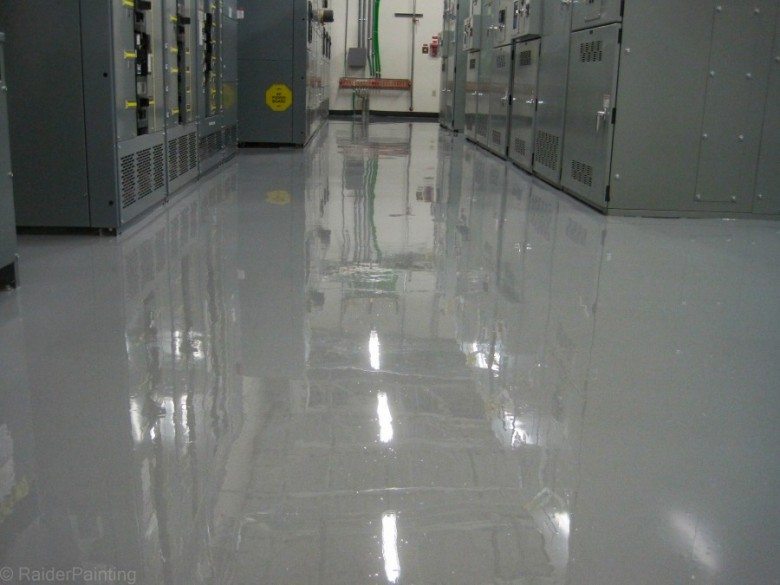Plumbers install and repair pipes that deliver water and drain waste in homes, buildings, and businesses. They also interact with clients to discuss plumbing needs, provide estimates, and ensure compliance with building codes.
Due to the nature of their work, plumbers must often work outside of standard working hours to respond to emergency calls. This can include responding to clogged toilets, burst pipes, and heating problems. Click here to Learn More.
Plumbing is a critical part of any home, but it’s not something homeowners can just dive into headfirst. Proper installation requires planning, quality materials, and adherence to local codes. Attempting to install plumbing without the proper knowledge can lead to leaks, water damage, and even health hazards like sewage backups. To avoid these issues, it’s best to work with a professional plumber during new construction or major remodeling projects.
The first step in plumbing installation is determining the location for pipes and other components. This involves making a layout plan, measuring the space, and deciding on the type and size of pipes needed. This step is particularly important for underground plumbing, as plumbers must take into account factors like soil conditions and potential flood risks.
After making a plan, the plumber must clear out the path for the pipes by removing existing walls, cutting away drywall, and lifting tile. Once the path is cleared, the plumber must then lay down the piping, connecting it to existing pipes where necessary. Plumbers use a variety of pipe materials, including copper, PEX, and ABS. Each has its own benefits, but copper is highly durable and corrosion-resistant. It also doesn’t contain any lead, which is a concern for many homeowners. PEX pipes are flexible, easy to weave through walls and ceilings, and can withstand high pressures. They’re also color-coded for hot and cold water, which makes them easier to identify when working on a project. Finally, ABS pipes are similar to PVC but are more resilient against freezing temperatures.
Once the piping is in place, the plumber can test for leaks and make any final adjustments needed. This is also the time to install any fixtures, such as faucets, toilets, and showerheads. Professional plumbers have the tools and equipment needed to complete these tasks quickly and accurately, minimizing future repair costs.
Plumbing is a complex and dangerous job, so it’s always best to leave it to the professionals. Working with a plumber during new construction or remodeling projects ensures that all plumbing is installed correctly and meets building code requirements. It can also help prevent costly mistakes that can be extremely frustrating and expensive to fix.
Repair
Whether it’s fixing a dripping faucet or unclogging a drain, plumbers are in charge of maintaining and repairing the water and sewage systems that keep our homes and businesses running smoothly. Their job is more complicated than simply cutting pipes and putting in new fixtures, however. They must also know how to read and interpret blueprints, building codes, and other information related to plumbing installations. They may work on residential, commercial, or industrial projects. Some plumbers choose to specialize in certain areas, such as gas pipe installation and repair or medical plumbing.
Plumbers are also responsible for installing and repairing appliances, such as sinks, toilets, tubs, showers, water heaters, and dishwashers. They must be able to connect these appliances to the main plumbing system and ensure that they are functioning properly. This involves using hand tools and power equipment to cut, measure, and bend metal, plastic, and other materials. They may need to drill holes into walls and floors to install pipes and other equipment, and they must be able to solder joints and use other welding techniques.
Most plumbers spend a significant amount of their time on maintenance and repair work. This is because faulty plumbing systems can cause serious damage to a home or business. For example, a burst pipe can lead to flooding and extensive water damage. In addition, a clogged drain or sewer line can lead to health and safety issues.
When a homeowner calls for help, the plumber must respond promptly and diagnose the problem accurately. This requires excellent communication skills as well as knowledge of how to fix the issue. The plumber must then explain the solution to the customer and receive approval before beginning work. For instance, if a clogged drain is caused by a buildup of hair, grease, and other debris, the plumber may suggest using a chemical cleaner to clear the blockage.
If a plumber needs to enter a customer’s home, they should make sure the area is clean and that pets and children are out of the way. This will allow them to work faster and more efficiently. In some cases, plumbers need to enter a customer’s basement to access the main plumbing system. This can be a dangerous job, so it is important for homeowners to prepare for this by cleaning the area and by moving any items that could get in the way of the plumber’s work.
Maintenance
Commercial plumbing maintenance is the careful process of inspecting, cleaning, and repairing the many pipes, fixtures, and water heaters that comprise a business’s plumbing system. It’s a strategic approach to preserve optimal functioning across all components, preventing expensive repairs and helping to ensure safety.
A commercial plumbing maintenance checklist typically includes regular inspections of pipes, fixtures, and water heaters, as well as testing water pressure, addressing drain and sewer line issues, removing mineral buildup, and replacing toilet components. It also includes ensuring backflow prevention devices are working properly, and maintaining compliance with regulatory requirements for tests and inspections.
Leaky faucets and clogged drains are some of the most common problems that plumbers address, and these issues can often be prevented with a regular plumbing maintenance schedule. For example, by installing a water softener to reduce hard water deposits, and by teaching employees and customers to properly flush toilet paper and other waste, plumbers can help prevent costly pipe damage and clogs.
The most important part of any plumbing maintenance plan is scheduling regular inspections. By performing a visual examination of pipes and fixtures, checking for signs of corrosion or leaking, and conducting video camera inspections of drains, plumbers can catch problems before they become major issues. These inspections can also identify potential hazards, such as trees or shrubs that are too close to plumbing lines that could cause leaks and blockages.
Maintaining a proper plumbing maintenance schedule can also save businesses money. A well-maintained plumbing system operates more efficiently and is less likely to require costly repairs, which can result in substantial savings on energy bills. In addition, routine maintenance can extend the lifespan of pipes and fixtures by identifying and repairing problems as they arise, rather than waiting until they break down completely.
While some plumbing maintenance tasks can be done by in-house staff, it’s essential to work with a professional plumber to perform more complex maintenance tasks. This includes installing and repairing backflow preventers, maintaining gas systems, and cleaning sewer lines to prevent clogs and blockages. It’s also important to consider the quality of parts being used when performing maintenance, as low-quality parts may not withstand the constant use of a plumbing system.
Customer Service
Customer satisfaction is a key indicator of the quality of work a plumber provides. Providing customers with excellent service helps to build trust and loyalty, which leads to repeat business and recommendations. Plumbers can drive customer satisfaction by prioritizing quality workmanship and using the best materials, being punctual, communicating clearly, and exhibiting professionalism. Providing competitive pricing and being transparent about costs also plays a role in boosting customer satisfaction.
Often, customers contact plumbing businesses when they have an emergency and need help quickly. Being ready to assist them and resolving the problem as quickly as possible sets you apart from the competition. In addition, being able to offer a wide range of plumbing services can expand your potential client base and boost revenue.
It’s important for plumbers to have good communication skills, especially when discussing complex problems with customers. Using non-technical language and visual aids can make complicated issues easier to understand, which can enhance customer satisfaction. Active listening is another essential component of great communication with customers. By giving your attention to a customer’s description of the problem, you demonstrate that you value their concerns and are genuinely interested in solving their problem.
As a plumbing professional, you may encounter some disgruntled clients who are difficult to work with. It’s important to maintain a calm, rational attitude and to avoid reacting emotionally to bad reviews or complaints. Providing an effective and professional response to an angry customer can help you salvage the relationship.
Plumbers often work on call, which means they must be available when their customers need them, even outside of regular working hours. Being dependable and consistent in your responses, even to after-hours calls, will improve customer satisfaction and boost referral business.
Investing in training and customer service processes for your plumbing team can also improve the overall experience for customers. Embracing technology to streamline invoicing, scheduling, and dispatching can also provide convenience and transparency to customers. For example, a plumber’s mobile app can help them access customer information and updates on the job site in real-time, which can increase productivity and ensure customer satisfaction.







 Epoxy paints are easy to apply, making them a great choice for DIY enthusiasts. However, you will need to plan ahead because they require multiple coats for proper coverage and drying times between each application. Following the manufacturer’s recommendations regarding the number of coats and drying time is best.
The concrete floor must be clean and dry before applying an epoxy coating. This can be a labor-intensive process, as it requires extensive scrubbing and cleaning using chemicals or solvents to ensure that all dirt, oils, and grease are removed from the surface. Additionally, the surface needs to be etched and sanded to ensure proper adhesion. If these steps are not taken, the epoxy coating can peel or flake off.
While epoxy is very durable, it can experience wear and thinning in high-traffic areas over time. Moreover, the floor may become discolored with time. However, it is easy to fix this issue by sanding the surface and applying a new coat of epoxy. It is important to choose a quality product, as this will help to protect the floor from damage and increase its lifespan.
Unlike polishing concrete, which is more difficult to accomplish without professional help, epoxy paint is very user-friendly and can be applied by novices with some guidance. It also comes in a variety of hues and unique mixes, which can liven up a garage or workshop floor. Additionally, it is resistant to oil and chemical spills, which can be difficult to remove from polished concrete.
Before you start painting, it is important to understand the difference between a two-part and single-part epoxy paint. The former has a separate container for the base and the carrying agent, while the latter contains all of the ingredients in one bottle. Make sure to shake the can thoroughly before use, as epoxy must be mixed well for optimal adhesion. You can mix the epoxy by hand or with a mechanical mixer, but be sure to avoid scraping the bottom and sides of the container. Doing so could contaminate the epoxy with salt from your hands, which can cause it to sag or lift.
Epoxy paints are easy to apply, making them a great choice for DIY enthusiasts. However, you will need to plan ahead because they require multiple coats for proper coverage and drying times between each application. Following the manufacturer’s recommendations regarding the number of coats and drying time is best.
The concrete floor must be clean and dry before applying an epoxy coating. This can be a labor-intensive process, as it requires extensive scrubbing and cleaning using chemicals or solvents to ensure that all dirt, oils, and grease are removed from the surface. Additionally, the surface needs to be etched and sanded to ensure proper adhesion. If these steps are not taken, the epoxy coating can peel or flake off.
While epoxy is very durable, it can experience wear and thinning in high-traffic areas over time. Moreover, the floor may become discolored with time. However, it is easy to fix this issue by sanding the surface and applying a new coat of epoxy. It is important to choose a quality product, as this will help to protect the floor from damage and increase its lifespan.
Unlike polishing concrete, which is more difficult to accomplish without professional help, epoxy paint is very user-friendly and can be applied by novices with some guidance. It also comes in a variety of hues and unique mixes, which can liven up a garage or workshop floor. Additionally, it is resistant to oil and chemical spills, which can be difficult to remove from polished concrete.
Before you start painting, it is important to understand the difference between a two-part and single-part epoxy paint. The former has a separate container for the base and the carrying agent, while the latter contains all of the ingredients in one bottle. Make sure to shake the can thoroughly before use, as epoxy must be mixed well for optimal adhesion. You can mix the epoxy by hand or with a mechanical mixer, but be sure to avoid scraping the bottom and sides of the container. Doing so could contaminate the epoxy with salt from your hands, which can cause it to sag or lift.

 Painting cabinets can be a great way to make your kitchen look brand new without spending a fortune. However, it is important to prep your space properly and use the right tools. First, you will need to prepare your painting station. This includes setting up a work table or using two small ladders. It is also good to put a drop cloth over your walls to catch drips.
Painting cabinets can be a great way to make your kitchen look brand new without spending a fortune. However, it is important to prep your space properly and use the right tools. First, you will need to prepare your painting station. This includes setting up a work table or using two small ladders. It is also good to put a drop cloth over your walls to catch drips. The Water Mitigation Specialist responds to various water events and provides various mitigation services, including mold remediation, asbestos/lead abatement, and carpet cleaning and reinstallation. In addition, Water Mitigation Specialist performs on-call schedules and supports facility-related tasks. Water mitigation technicians demonstrate leadership and management skills and interact effectively with superiors and junior staff. They also travel as needed to complete their job responsibilities.
The Water Mitigation Specialist responds to various water events and provides various mitigation services, including mold remediation, asbestos/lead abatement, and carpet cleaning and reinstallation. In addition, Water Mitigation Specialist performs on-call schedules and supports facility-related tasks. Water mitigation technicians demonstrate leadership and management skills and interact effectively with superiors and junior staff. They also travel as needed to complete their job responsibilities.